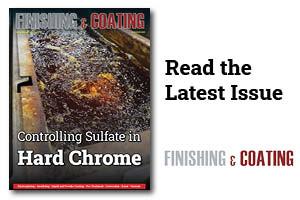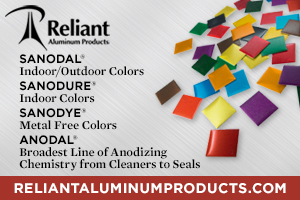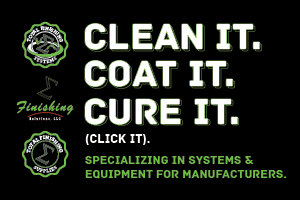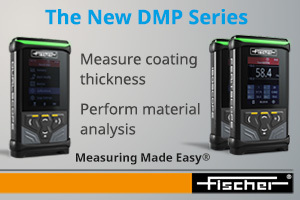Owner Mark Morris differs from most metal finishers in that he has no inclination to add or change the services that J&M Plating in Rockford, Illinois, provides to its fastener customers.
For one, J&M Plating already has just about everything needed to run its fastener coating and small stamping operations. It has 220,000 square feet of production space, offering one-stop finishing services, and is ISO 9001:2015 quality certified. Its heat-treating and plating laboratories are ISO/IEC 17025:2005 accredited for mechanical testing.
Secondly, J&M Plating has been one of the top zinc electroplaters since its founding in 1986, offering heat-treating, dip-spin coating, patching, and sorting as part of its plating processes.
Finishing Business About 70% Automotive
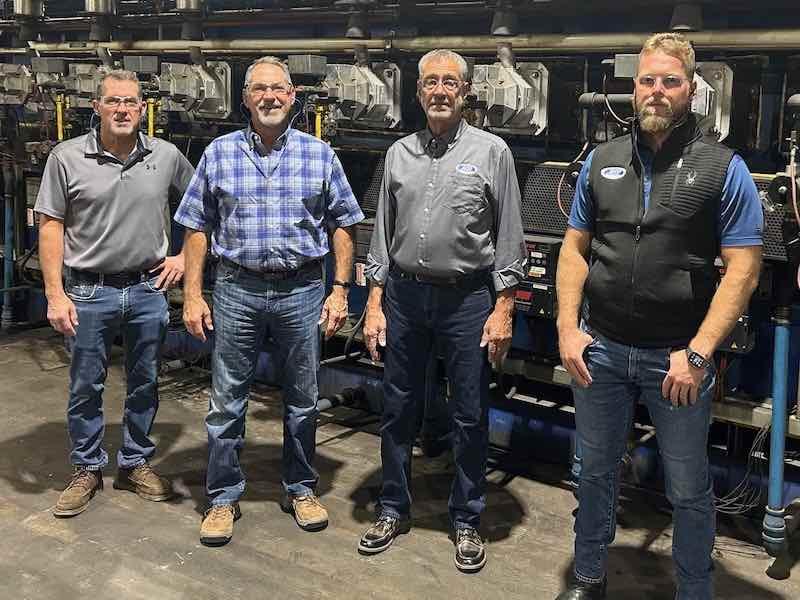 J&M Plating owners Rick, Dave, and Mark Morris and Nic Krause, President of the company.For Morris and his brothers, Rick and Dave, changing up their processes can be a timely — as well as costly — issue to undertake. With their fastener business about 70% automotive and current OEM specifications as tight as an innertube, making a change could be a hill not worth climbing.
J&M Plating owners Rick, Dave, and Mark Morris and Nic Krause, President of the company.For Morris and his brothers, Rick and Dave, changing up their processes can be a timely — as well as costly — issue to undertake. With their fastener business about 70% automotive and current OEM specifications as tight as an innertube, making a change could be a hill not worth climbing.
However, that has not stopped J&M Plating from becoming one of the top fastener coating companies in North America. It’s the Production Part Approval Process (PPAP) — sometimes involving as many as 18 elements— that most OEMs use, which can drive a facility owner crazy.
“With every new process that we've added, it's about a three to four year timeframe that you have to go through before it really starts to take off,” Mark Morris says. “With PPAP, most customers don't want to go through the re-PPAP process. It's too costly, and their customers don’t want to do it unless you're going to give them cost savings. Even then, it’s at least three years before we will start making money with that process.”
“A lot of our customers would send it out to a commercial heat treater, and they didn't really care about the condition of the surface coming into the plater.”
In recent years, J&M Plating has expanded its services to include robotics and technology, enabling it to offer sorting features to its customers. Additionally, the company has introduced thread locking and sealing applications.
This year, the company has replaced its existing enterprise resource planning (ERP) system with a new vendor, which has significantly improved its utilization of barrel plating lines, resulting in increased efficiencies and faster throughput.
Evolving to Meet Customer Needs
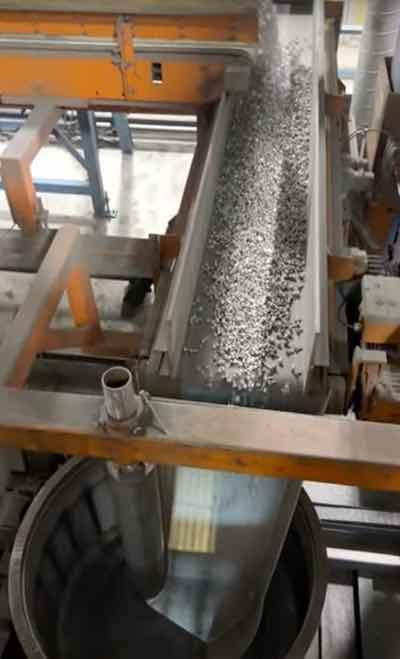 J&M Plating already has just about everything needed to run its fastener coating and small stamping operations.That has been the hallmark of J&M Plating since its founding nearly 40 years ago. It is a company that continually evolves to meet the needs of its customers, while also innovating to attract new ones.
J&M Plating already has just about everything needed to run its fastener coating and small stamping operations.That has been the hallmark of J&M Plating since its founding nearly 40 years ago. It is a company that continually evolves to meet the needs of its customers, while also innovating to attract new ones.
“Listening closely to customers with an open mind is invaluable for driving strategic growth through partnership,” says Nic Krause, President of the company. “Our approach is, and always will be, to add capabilities that are both in demand and currently underserved within our customer base. Expanding based on any other criteria—and then trying to convince customers they need it—would be inefficient, distracting, and misaligned with our commitment to building strong partnerships.”
That was the case when the company began as a solely electroplating operation in 1986, but soon added heat treating services — at considerable cost and risk — to satisfy customer requirements for those who needed a single-source supplier.
Heat treating was also necessary since most of the parts they received to finish were in very poor condition.
“A lot of our customers would send it out to a commercial heat treater, and they didn't really care about the condition of the surface coming into the plater,” Mark says. “We would always have to try to beef up our acid, or in some cases we would pull the carbon because we were throwing so much acid at it.”
It seemed that whatever they were trying to overcome, the poor heat treatment process wasn’t enough, as some parts could not be finished. And either way, the customer was sometimes unhappy, and usually the finisher got the blame.
“Parts wouldn't plate and they would blister,” Mark says. “We'd have to send them to blast, and we would go back at our customer and say, ‘The heat treater is giving us a condition that we can't really deal with.’ You had a lot of fingers pointing back and forth.”
Invest Heavily in Heat Treating
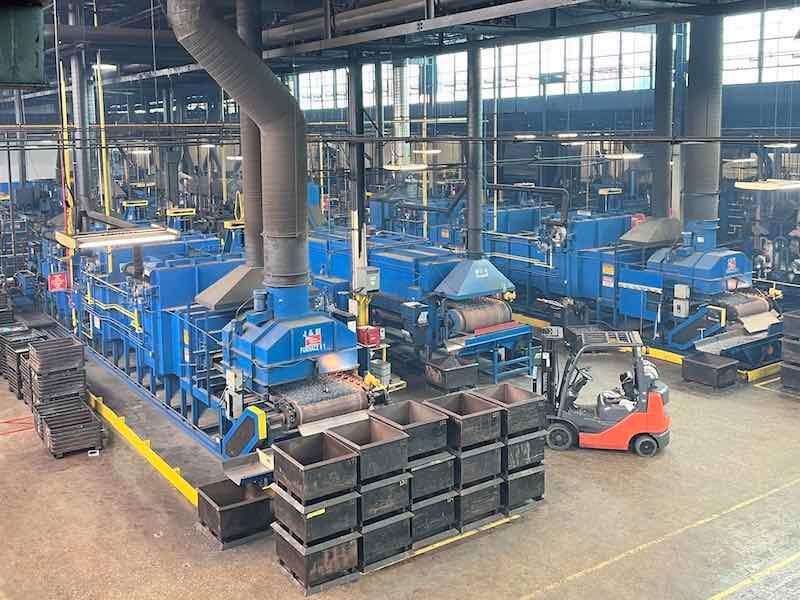 J&M Plating has 220,000 square feet of production space, offering one-stop finishing services, and is ISO 9001:2015 quality certified.That led J&M Plating to invest heavily in the heat-treating aspect of the fastener business. They quickly had to become experts in the process, purchase the necessary equipment, and train their team in its use. But it was an easy choice to make, knowing how it would retain and grow the plating side of the business.
J&M Plating has 220,000 square feet of production space, offering one-stop finishing services, and is ISO 9001:2015 quality certified.That led J&M Plating to invest heavily in the heat-treating aspect of the fastener business. They quickly had to become experts in the process, purchase the necessary equipment, and train their team in its use. But it was an easy choice to make, knowing how it would retain and grow the plating side of the business.
Today, the company operates three continuous-mesh belt furnaces: one at a rate of 6,000 pounds per hour, two at 4,000 pounds per hour, and one at 2,000 pounds per hour, all equipped with automated loading and pre-wash capabilities. They also have two batch hardening furnaces, two draw furnaces, and one pre-wash station.
“We knew how important that was,” Mark says. “We know the different areas of the process to target to make sure that the parts have a good surface condition, and that we don't have to throw a lot of acid or extra cleaning at it to make sure that we can produce good parts. The customers liked the idea of eliminating finger-pointing and back-and-forth. It's just one company to go to that is responsible for all of the processes.”
“In the evening, we would plate the parts and run the plating lines. And (Joe) would show us how to plate. We did that for a while, and then it looked like we were going to make a go of it. We were off and running.”
That pride in workmanship dates back to when the J&M Plating’s namesakes — their parents Joe and Maggie — started the company in 1986. Joe Morris was the son of a Tennessee sharecropper and worked on a farm, often toiling in long, backbreaking hours. Eventually, his father went to work for the Greenlee Company in Rockford, and the family relocated.
Joe Morris went to work at a bowling alley when he was 14, and then worked at a casket hardware company, where he lost two fingers in a punch press mishap. He wound up at Camcar, a fastener manufacturer in the Rockford area, where he learning maintenance, plating, induction hardening, and heat treating.
Change in Ownership Brings New Opportunity
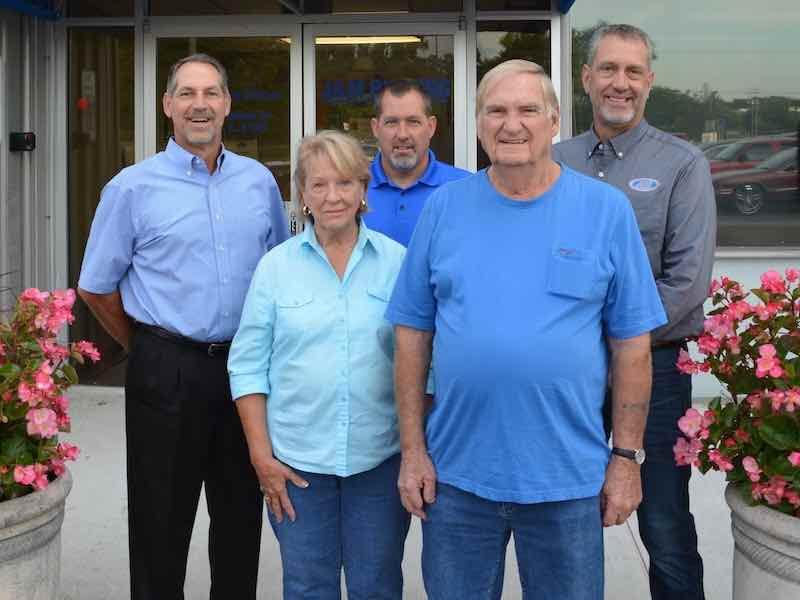 J&M Plating namesakes Joe and Maggie Morris turned the Rockford, IL business over to their three sons.Joe was promoted to head the heat-treating department and then general supervisor over those manufacturing lines. By then, he and Maggie had three sons. Still, a change in ownership at Camcar, when Textron acquired the company in 1986, led Joe to decide to leave the company after Textron discontinued its in-house plating operations due to environmental concerns.
J&M Plating namesakes Joe and Maggie Morris turned the Rockford, IL business over to their three sons.Joe was promoted to head the heat-treating department and then general supervisor over those manufacturing lines. By then, he and Maggie had three sons. Still, a change in ownership at Camcar, when Textron acquired the company in 1986, led Joe to decide to leave the company after Textron discontinued its in-house plating operations due to environmental concerns.
While Joe was training outside vendors on how the company finished the fasteners, he realized he could also provide these services, and he and Maggie decided to start J&M Plating.
Mark Morris had just graduated from college with an accounting degree, and Joe asked him to come run the business side of the new venture.
“He had the know-how in the shop, but administratively he didn't have that background or skillset,” Mark says. “He felt that I knew all about administration and said, ‘Hey, you take care of the office and I'll take care of the shop.’ I said, ‘I'm all in.’ I was in my 20s, and I had nothing to lose.”
Soon, his older brother, Rick, joined in on the new venture, and the Morris brothers began welding together the new plating lines and installing the plumbing. By September of 1986, J&M Plating was up and running with a few customers. Both Mark and his father had day jobs — Joe was still at Camcar as they were winding down operations — so they would run the business at night, while Rick picked up parts during the day.
“In the evening, we would plate the parts and run the plating lines,” Mark says. “And he would show us how to plate. We did that for a while, and then it looked like we were going to make a go of it. So, my dad turned in his time at Camcar and quit on a Friday. On Monday, we sent a straight truck to Camcar, and they filled it, and we were off and running.”
Providing Sorting Services for the Fastener Industry
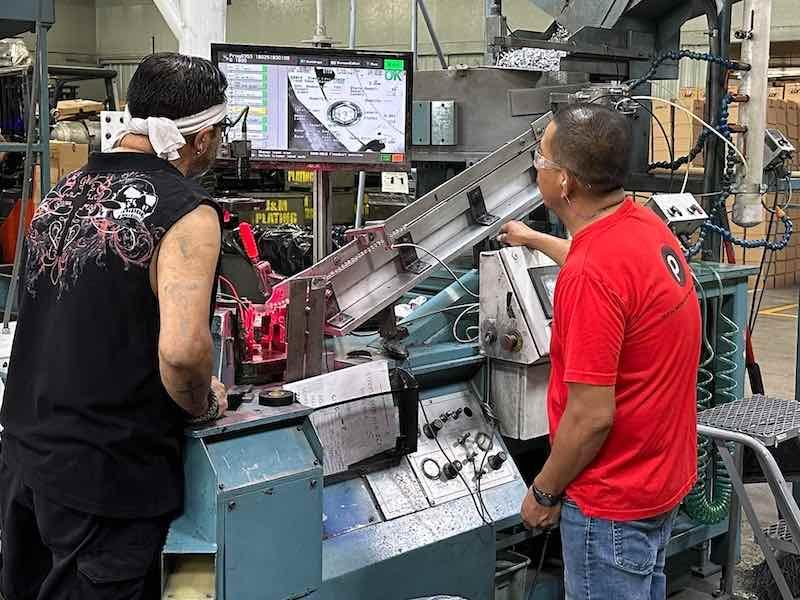 The sorting component of the operation allows them to sort fasteners by various methods, including by shank length, head height, head diameter, or any additional feature.According to Mark, the newly born plating shop “grew like crazy,” and they soon added heat treating to their services in 2002. Five years later, in 2007, J&M Plating went into a partnership with Quality Inspection Services to provide sorting for the fastener industry. They eventually bought out their partners and had full control of their operations, which included heat treating, zinc electroplating, phosphating, and inspection sorting.
The sorting component of the operation allows them to sort fasteners by various methods, including by shank length, head height, head diameter, or any additional feature.According to Mark, the newly born plating shop “grew like crazy,” and they soon added heat treating to their services in 2002. Five years later, in 2007, J&M Plating went into a partnership with Quality Inspection Services to provide sorting for the fastener industry. They eventually bought out their partners and had full control of their operations, which included heat treating, zinc electroplating, phosphating, and inspection sorting.
In 2012, J&M Plating secured a Doerken license and added dip-spin processing equipment, enabling them to secure larger contracts with major OEMs and Tier I suppliers across various industrial markets, including automotive, construction, electrical, agriculture, heavy equipment, aviation, and others.
They have added more furnaces and plating lines along the way. In 2022, they introduced a zinc-nickel line, and in 2023, they added a Precote adhesive patch line for thread locking and sealing.
“We started as a plating company and ended up being a complete one-stop shop service, because that is what the market wants today,” Mark says.
The sorting component of the operation allows them to sort fasteners by various methods, including by shank length, head height, head diameter, or any additional feature. The process is essential to J&M Plating’s customers because manufacturing defects and foreign material that makes its way to an automated assembly line can have serious repercussions related to assembly equipment downtime and associated costs.
Morris says the sorting is automated, and it can run at a rate of as low as 100 pieces per minute to as high as 700 pieces per minute.
“The part comes in front of cameras — you can have a top camera and a side camera — and you're taking dimensions of the threads, dimensions of the head,” Mark says. “You look for head cracks and any defects that the fastener manufacturer could have in their process; we can generally find them with our vision sorting.”
Krause says that adding these services taps into one of their greatest strengths: customer focus. This involves listening with an open mind, identifying real needs, and aligning their capabilities to simplify their customers’ lives.
“We are self-driven to build on and continually optimize our current offerings, ensuring that our growth directly supports customer success,” he says. “We keep promises by delivering consistent quality and following through on every commitment. At the same time, we strive to do things better—whether by innovating in heat treating, plating, coating, adhesives, sorting, or by streamlining subprocesses to reduce complexity for our customers.
“Across the industry, knowledge transfer between generations has been uneven, creating gaps that could and otherwise would affect service. By integrating decades of our experiences and expertise into our ERP system, we are standardizing critical processes and ensuring that best practices are preserved and consistently applied.”
Equally important, Krause says, is that they show respect for their team, both internally and externally.
“By empowering our workforce, we create an environment where we can work collaboratively with customers to overcome even the toughest challenges,” he says. “This mentality of partnership, reliability, and continuous improvement is what sets J&M Plating apart and drives long-term, strategic relationships.”
New ERP System Brings Efficiencies and Functionality
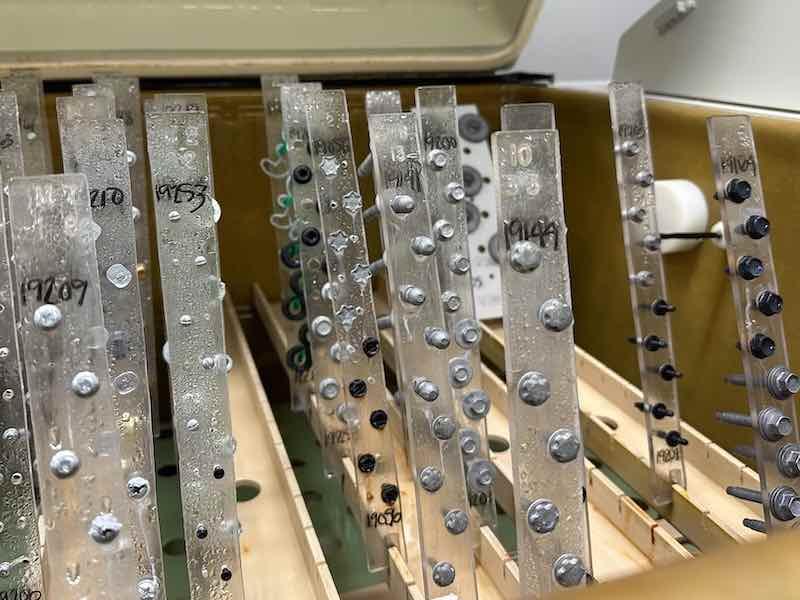 J&M Plating is is ISO 9001:2015 quality certified, and its heat-treating and plating laboratories are ISO/IEC 17025:2005 accredited for mechanical testing.This year, J&M Plating implemented a new ERP system by introducing ProPlate to overhaul their existing systems, aiming to improve efficiencies and functionality. It was a three-year journey for the shop as they sought to bring their systems up to date and provide them with more flexibility.
J&M Plating is is ISO 9001:2015 quality certified, and its heat-treating and plating laboratories are ISO/IEC 17025:2005 accredited for mechanical testing.This year, J&M Plating implemented a new ERP system by introducing ProPlate to overhaul their existing systems, aiming to improve efficiencies and functionality. It was a three-year journey for the shop as they sought to bring their systems up to date and provide them with more flexibility.
The ProPlate system can handle J&M Plating’s barrel lines with significantly more accuracy than before, especially as they worked to determine loads, resulting in more accurate and precise coating recipes.
“We really like the plating module and the way that it works; it gives us a much better and more accurate loading than what we've had in the past,” Morris says. “It's based on surface area, and we've always known that and actually tried to tackle that years ago.”
That is when J&M Plating brought in consultants from Northern Illinois University to help them with their last system. The goal was to more accurately calculate the surface area of each fastener in the barrel lines, thereby gaining a more accurate understanding of how to set the plating controls.
“It took some time, but we wrote a little program to help us, and we just could never get it fully implemented with the software company we were using,” Morris says. “On the line itself, it would tell the operator basically how it's going to be loaded. But ProPlate has done that, and so that part of it's been very good for our operations.”
Getting the Chemistry and Load Capacity Right
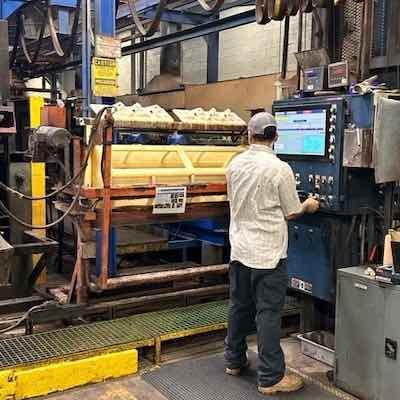 The ProPlate system can handle J&M Plating’s barrel lines with significantly more accuracy than before, especially as they worked to determine loads, resulting in more accurate and precise coating recipes.Alkesh Patel, President of ProPlate, says that getting the chemistry and load capacity right is critical in plating and coating. Their software automates surface-area calculations and load optimization based on part geometry, process requirements, and tank constraints.
The ProPlate system can handle J&M Plating’s barrel lines with significantly more accuracy than before, especially as they worked to determine loads, resulting in more accurate and precise coating recipes.Alkesh Patel, President of ProPlate, says that getting the chemistry and load capacity right is critical in plating and coating. Their software automates surface-area calculations and load optimization based on part geometry, process requirements, and tank constraints.
“The right area calculations ensure maximum material usage efficiency, optimized tank loading, and reduced rework and waste,” Patel says. “Such precision isn’t just about saving time; it directly improves your margins and enhances process consistency.”
The ProPlate system allows shops like J&M Plating to batch smarter — and not harder — when using its Bulk Scheduling tool when running barrel lines.
“The software lets a shop group jobs by part material, surface area, process chemistry, and more, which creates high-efficiency batches that reduce changeovers and chemical waste,” Patel says. “It’s intelligent scheduling that understands the chemistry behind the job.”
Morris says what ProPlate delivers to them is what he has been trying to do for a long time, when he brought in the engineers from the university to help write additional software for the barrel lines.
“It was probably 25 years ago when I brought in NIU and I tried to do what ProPlate’s doing for us now,” he says. “But I could never get it finished off; I needed a better partner on the software side of things.”
Krause says that, while the efficiencies gained via the ERP changeover are critical, it wasn’t the only driver. He says it was a strategic investment to ensure long-term reliability and consistency for our customers.
“Across the industry, knowledge transfer between generations has been uneven, creating gaps that could and otherwise would affect service,” Krause says. “By integrating decades of our experiences and expertise into our ERP system, we are standardizing critical processes and ensuring that best practices are preserved and consistently applied.”
“Heat treat is always a difficult part of the business. Parts are going to get hung up somewhere in the system; typically, it’s heat treat because you take one of those lines down, they're usually down for a minimum of four to five days. You try to sell them seven days a week because it's the only way you can get some sort of margin from them.”
This investment, he says, aligns perfectly with J&M Plating’s core values: being self-driven to improve, committed to keeping promises through reliable performance, and focused on doing things better every day.
“By systemizing how we work, we further our customer focus—making processes simpler, reducing risk, and ensuring customers can count on us regardless of industry shifts,” Krause says. “And with respect for our team, we’re empowering every employee with the tools and knowledge needed to succeed.
Patel says ProPlate calculates the surface area for each part and recommends the optimal number of parts per barrel. This ensures that loads are not only efficient but also within plating quality limits, which boosts both throughput and compliance.
Barrel plating is often prone to inefficiencies like chemical wastage, misloading, quality inconsistencies, and manual scheduling errors. Morris says they have seen improvements since they installed the system in July.
Implementing a New System with the Workforce
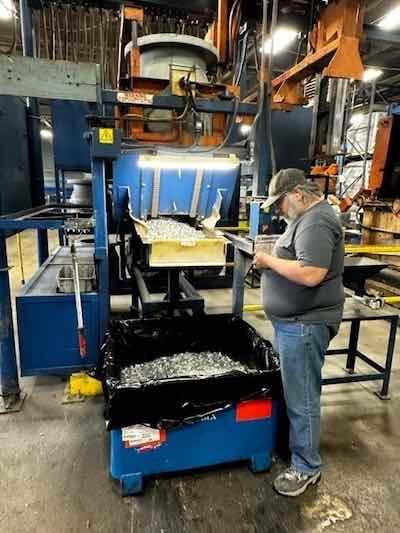 The biggest challenge, he admits, is getting his team used to the new operating system and its nuances after years of working in the previous system.
The biggest challenge, he admits, is getting his team used to the new operating system and its nuances after years of working in the previous system.
“Two months in and we had an all-employee meeting and we asked him, ‘How's it going now?’” Morris says. “And we were starting to get some positive comments. In the beginning, it was ‘Why are you changing? We liked our old system.’ Change is never easy, but I explained to them why it had to happen, and they understood the reasoning behind it. But nobody likes to go through the pain, but that's just part of progress sometimes.”
Now that J&M Plating has the software it has always wanted, the company is adding a new furnace for heat treating to also help efficiencies and reduce downtime. The goal is to add services as needed by its customers, while also keeping their current systems up-to-date and efficient.
“Heat treat is always a difficult part of the business,” Morris says. “Parts are going to get hung up somewhere in the system; typically, it’s heat treat because you take one of those lines down, they're usually down for a minimum of four to five days. You try to sell them seven days a week because it's the only way you can get some sort of margin from them. It's a tough part of the business, but we're adding another furnace now so that we have ample capacity there to make sure we keep our turnaround time.”
Krause adds that going forward, everything that J&M Plating does will be tied to their core values.
“They are the compass that has guided every decision, every challenge we’ve overcome, and every success we’ve earned,” he says. “Those same values will continue to be what carries us forward, shaping how we grow, how we serve our customers, and how we work together as a team.”
Visit https://www.jmplating.com.







